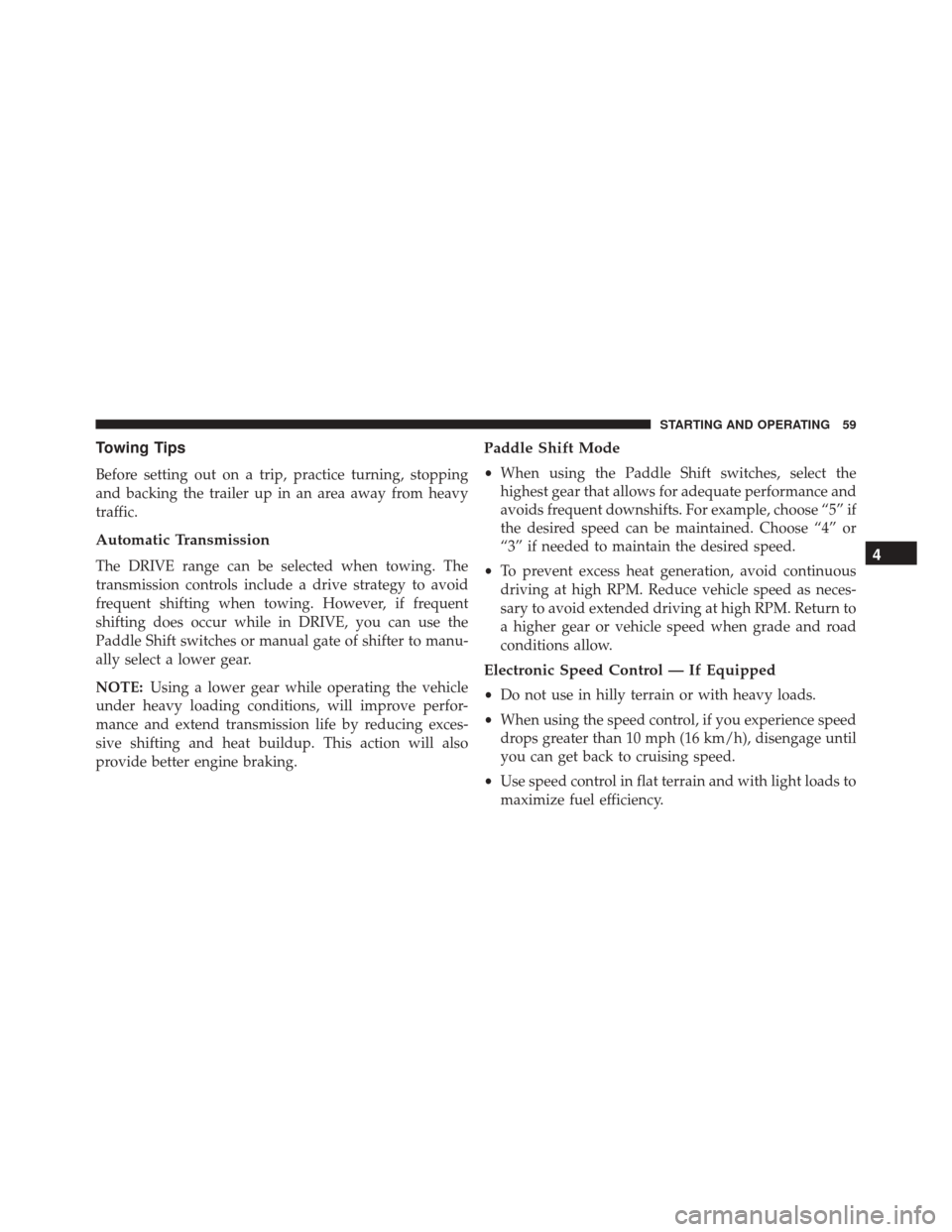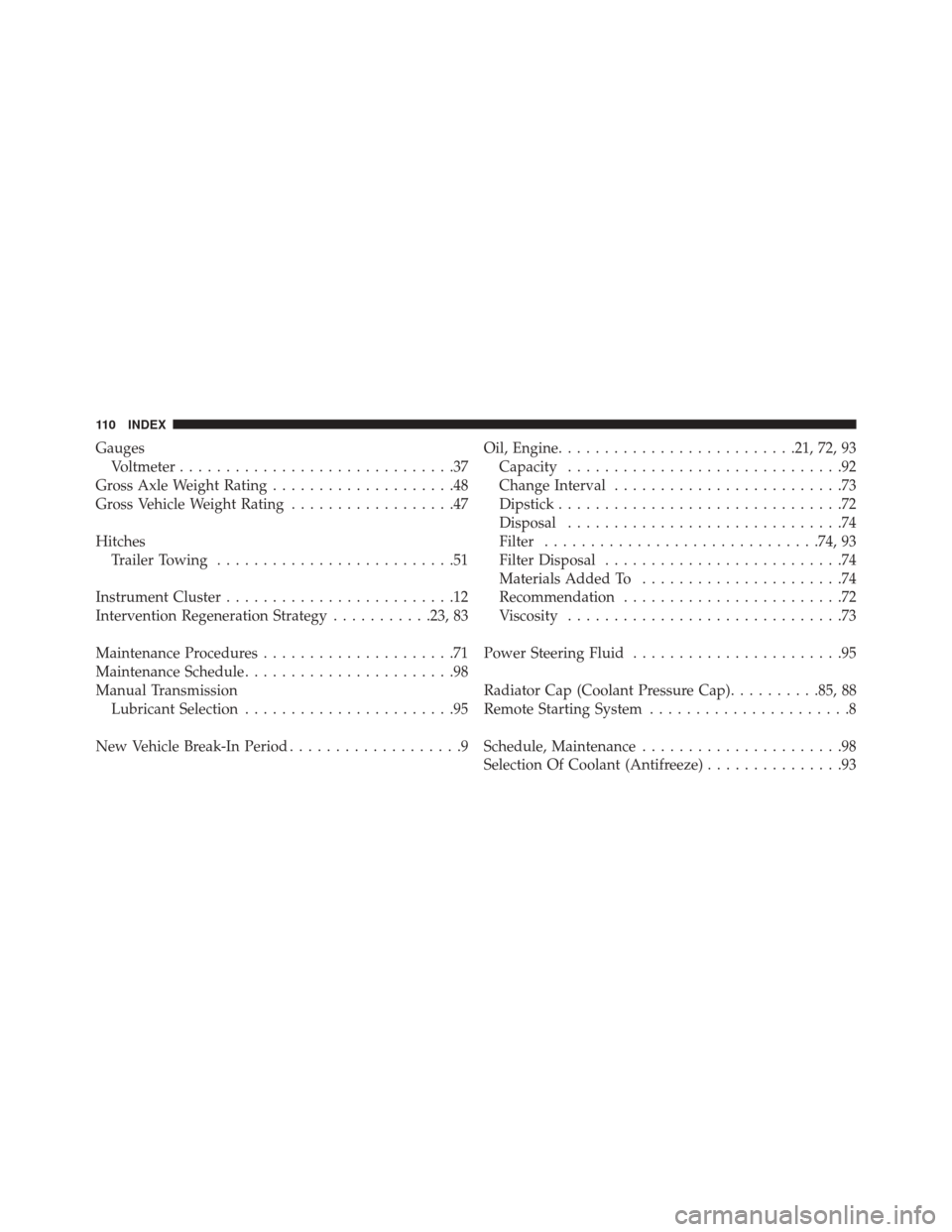Page 6 of 117

A MESSAGE FROM FCA US LLC
FCA US LLC welcomes you as a turbocharged diesel-
powered vehicle owner. Your diesel vehicle will sound,
feel, drive and operate differently from a gasoline-
powered vehicle. It is important that you read and
understand this manual.
Almost 100% of the heavy trucks in the United States and
Canada are diesel-powered because of the fuel economy,
rugged durability, and high torque which permits pulling
heavy loads.
You may find that some of the starting, operating, and
maintenance procedures are different. However, they are
simple to follow and careful adherence to them will
ensure that you take full advantage of the features of this
engine.NOTE:
•
Some aftermarket products may cause severe engine/
transmission and/or exhaust system damage. Your
vehicle’s powertrain control systems can detect and
store information about vehicle modifications that
increase horsepower and torque output such as
whether or not performance-enhancing powertrain
components, commonly referred to as downloaders,
power boxes, or performance chips have been used.
•
Any chassis/suspension or tire size modifications to the
vehicle will effect the performance of the Adaptive
Cruise Control and Forward Collision Warning System.
4 INTRODUCTION
Page 61 of 117

Towing Tips
Before setting out on a trip, practice turning, stopping
and backing the trailer up in an area away from heavy
traffic.
Automatic Transmission
The DRIVE range can be selected when towing. The
transmission controls include a drive strategy to avoid
frequent shifting when towing. However, if frequent
shifting does occur while in DRIVE, you can use the
Paddle Shift switches or manual gate of shifter to manu-
ally select a lower gear.
NOTE:Using a lower gear while operating the vehicle
under heavy loading conditions, will improve perfor-
mance and extend transmission life by reducing exces-
sive shifting and heat buildup. This action will also
provide better engine braking.
Paddle Shift Mode
• When using the Paddle Shift switches, select the
highest gear that allows for adequate performance and
avoids frequent downshifts. For example, choose “5” if
the desired speed can be maintained. Choose “4” or
“3” if needed to maintain the desired speed.
• To prevent excess heat generation, avoid continuous
driving at high RPM. Reduce vehicle speed as neces-
sary to avoid extended driving at high RPM. Return to
a higher gear or vehicle speed when grade and road
conditions allow.
Electronic Speed Control — If Equipped
• Do not use in hilly terrain or with heavy loads.
• When using the speed control, if you experience speed
drops greater than 10 mph (16 km/h), disengage until
you can get back to cruising speed.
• Use speed control in flat terrain and with light loads to
maximize fuel efficiency.
4
STARTING AND OPERATING 59
Page 112 of 117

GaugesVoltmeter ..............................37
Gross Axle Weight Rating ....................48
Gross Vehicle Weight Rating ..................47
Hitches Trailer Towing ..........................51
Instrument Cluster .........................12
Intervention Regeneration Strategy ...........23, 83
Maintenance Procedures .....................71
Maintenance Schedule .......................98
Manual Transmission Lubricant Selection .......................95
New Vehicle Break-In Period ...................9 Oil, Engine
......................... .21, 72, 93
Capacity ..............................92
Change Interval .........................73
Dipstick ...............................72
Disposal ..............................74
Filter ............................. .74, 93
Filter Disposal ..........................74
Materials Added To ......................74
Recommendation ........................72
Viscosity ..............................73
Power Steering Fluid .......................95
Radiator Cap (Coolant Pressure Cap) ..........85, 88
Remote Starting System ......................8
Schedule, Maintenance ......................98
Selection Of Coolant (Antifreeze) ...............93
110 INDEX